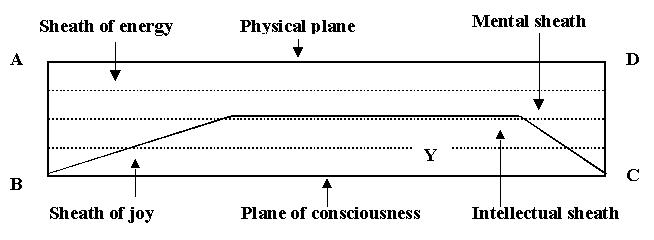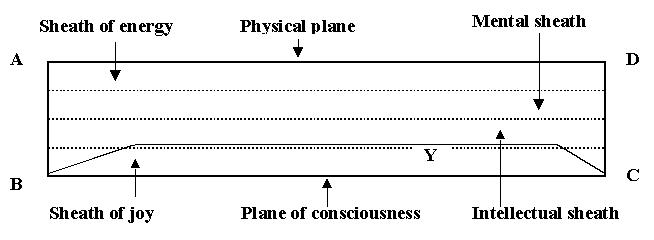|
mRtyunjayAya rudrAya nilakaNThAya shambhave,
amRuteshAya sarvAya mahAdevAya te namaH.
Salutations to Rudra, who has conquered
death, to Shambhu whose throat is blue (from swallowing poison), to the great deva, who is All, possessor of the
nectar of immortality.
I think we can understand life better when we understand death well. Moreover, we can make better
sense of life once we understand death. Not surprisingly, ancients who explored worldly life and inner life gave
special attention to death. Many ancient Indian texts speak of death and also contain advice on how one should approach death.
There are many practical benefits to understanding death. By understanding death we can learn how
it affects subsequent lives and more importantly the immediate next life. For example, we can learn how death
can influence the sexual identity and preferences in subsequent life. Mankind can only benefit by understanding the why and
how of such human traits, instead of condemning some for being different from the norm and declaring them sinners.
While sexuality is an important component of our personalities, I think many other aspects of personality
are also influenced by the nature of death and especially the last death.
I also think one must first understand the process of birth and death before trying to understand
rebirth. I see death as dissolution or breakdown of part of personality into its elements so that those parts are not identifiable
anymore as unique. The part that does not so dissolve and break down, remains uniquely identifiable, but is incomplete in
the scheme of things. Birth or rebirth is driven by this incomplete but unique part of personality in its desire to complete
itself one more time. It does so by collecting basic elements again and reconstituting them so as to complete its personality
again. There is no reason to believe that the same portion of personality is lost to dissolution in each death event and thus
there is no reason to believe that the portion that survives death (which is unique but incomplete) is the same each time.
I will now try to explain the basis of my above statement. Let Y die.
Here are a few of the infinite possible ways Y can die. Please refer to figure 4 in Two Guys to see what Y looked like when he was alive. Figures 8a through 8d show four of infinite
ways Y might be like after death. In figure 8a, death only destroyed the gross body of Y. This is as shallow as death can
be. The material of dead body becomes part of the surrounding material plane whence it came. In figure 8b, Y loses, not only
his gross body but the part of his subtle body, namely the energy sheath. His energy sheath dissolves into surrounding energy sheath of the universe and thus loses its separate
identity. In figure 8c, Y loses a bit more of his subtle body. Now his mental sheath also dissolves in surrounding undifferentiated
mental sheath of the subtle body of the universe - the hiraNyhgarbha. In figure 8d, he loses all of his subtle body, including the intellectual sheath.
By the way, there are infinitely many more ways for Y to die, not just four. This is just a brief overview of the dying process
in this model.




If reibirth is true, one thing it tells us is that death is not the final event in our experience.
If death is not a final event, then at least part of us must survive death. This is the basis of the ideas presented above.
While I believe in a common core to all of us, we are all so different in manifest world. Hence there is no reason to think
that the part of us that survives death is necessarily the same part as I have illustrated in the above figures, with four
examples. I believe the surviving part has some interesting implications for the survivor's immediate next life.
First of all, it is this surviving part that provides continuity to our existence through successive
lives. But since more or less of our personality or sheaths can survive, continuity across lives can be felt to a greater
or lesser extent. This creates all kinds of interesting situations. In general, if we die deep death, as in figure 8d, we
get a fresher start on new life. We feel less encumbered with our past lives. If we die shallower deaths, as in figures, 8a,
8b, or 8c, we are as if trying to complete some unfinished projects from our previous life. This effect is seen not just in
sexuality, but in all aspects of our lives.
Some people sense all their lives that there is something missing in their lives that they can
not put their fingers on. What these people miss is what they were missing before they last died, but that missing thing is
no where evident now in their new lives. Ancients realized how death can affect our future lives. Hence many ancient texts
have words of advice on how we should prepare for our deaths and what we should focus on in our last days. I think all such
advice is directed at experiencing deep death.
Continuity across death also means that we don't become enlightened all of a sudden when we die.
In fact, if we die very shallow death, we may not change much at all in death. I think we have best opportunity at change
when we die deep. Type of death we experience, affects not only out next life but also our state in between lives (svarga,
naraka, etc.). That is why spirits of dead people or ghosts are not all alike.
Finally, many personality problems can be explained based on the type of death a person last experienced.
|

